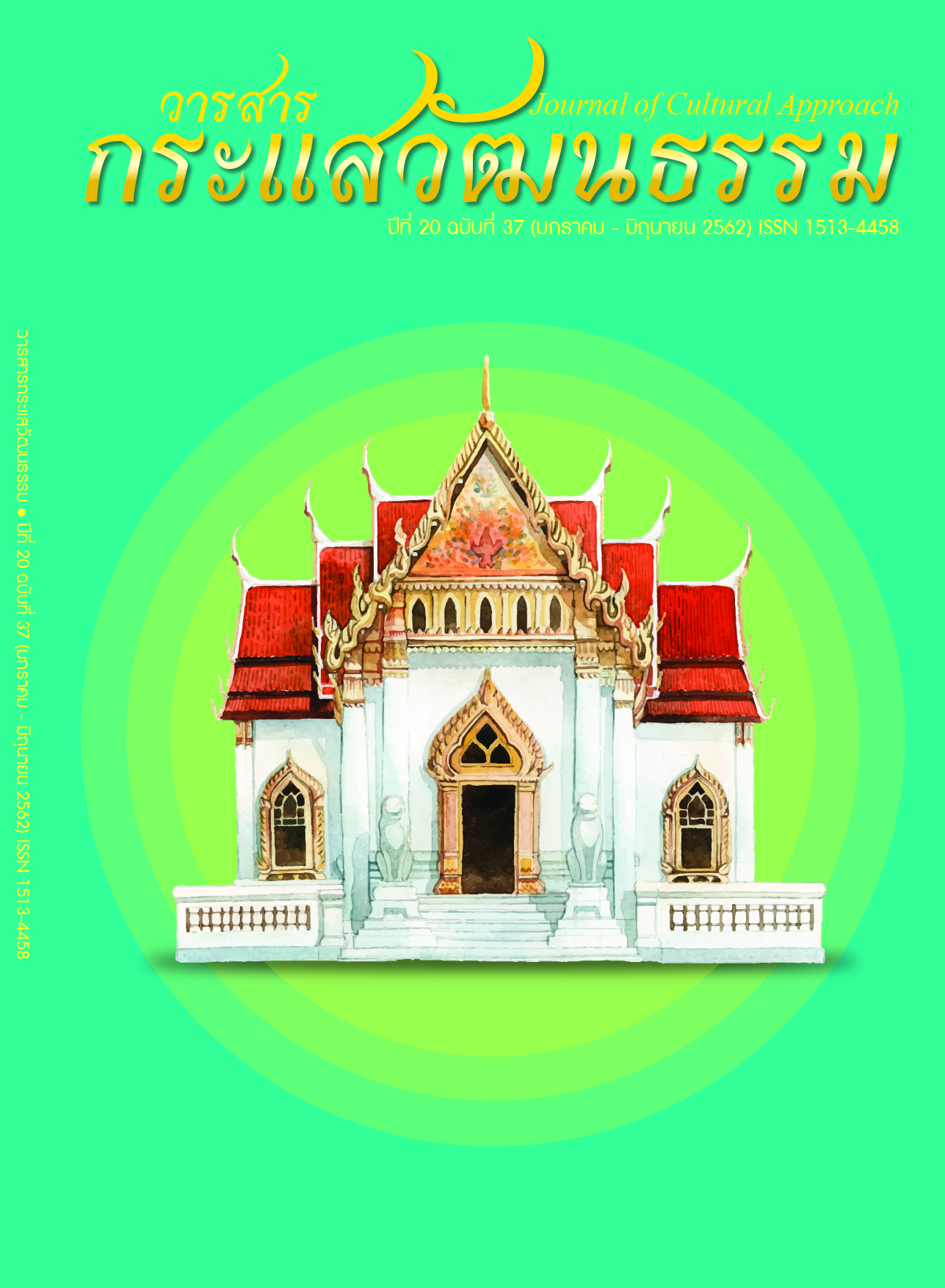Music Cultural Knowledge Transfer of Sea Gypsies Group in Satun Province
Main Article Content
Abstract
The objective of this research was to investigate the cultural knowledge transfer of the Sea Gypsies ethnic group, Urak Lawoi, in Satun province. This qualitative research employed an ethnomusicological method. The population includes 5 Urak Lawoi musicians and performers in Bulon Archipelago and Lipe Island, as the main group. Informants of an overall picture were 10 community leaders and people in both islands
as a secondary group who provided both direct and indirect information. The qualitative data analysis was undertaken by a content processing and information comparison. The results revealed that the knowledge capital on musical culture of Urak Lawoi in Satun existed in people of the middle age or over in both islands, and their cultural knowledge was transferred mainly to school age youth. Initially, the cultural capital of Bulon Archipelago
included music and dance, while only dance existed in Lipe. The cultural capital was transferred in 2 ways, i.e. within island and between islands. The knowledge and practice of musical culture had developed and changed by the environmental situation and social factors, resulting in 2 types of music and performance which included performance for the community in an original cultural way, and performance to serve the need of tourists.
Article Details
Proposed Creative Commons Copyright Notices
1. Proposed Policy for Journals That Offer Open Access
Authors who publish with this journal agree to the following terms:
- Authors retain copyright and grant the journal right of first publication with the work simultaneously licensed under a Creative Commons Attribution License that allows others to share the work with an acknowledgement of the work's authorship and initial publication in this journal.
- Authors are able to enter into separate, additional contractual arrangements for the non-exclusive distribution of the journal's published version of the work (e.g., post it to an institutional repository or publish it in a book), with an acknowledgement of its initial publication in this journal.
- Authors are permitted and encouraged to post their work online (e.g., in institutional repositories or on their website) prior to and during the submission process, as it can lead to productive exchanges, as well as earlier and greater citation of published work (See The Effect of Open Access).
Proposed Policy for Journals That Offer Delayed Open Access
Authors who publish with this journal agree to the following terms:
- Authors retain copyright and grant the journal right of first publication, with the work [SPECIFY PERIOD OF TIME] after publication simultaneously licensed under a Creative Commons Attribution License that allows others to share the work with an acknowledgement of the work's authorship and initial publication in this journal.
- Authors are able to enter into separate, additional contractual arrangements for the non-exclusive distribution of the journal's published version of the work (e.g., post it to an institutional repository or publish it in a book), with an acknowledgement of its initial publication in this journal.
- Authors are permitted and encouraged to post their work online (e.g., in institutional repositories or on their website) prior to and during the submission process, as it can lead to productive exchanges, as well as earlier and greater citation of published work (See The Effect of Open Access).
References
[2] Chaiboon, Pakamas. (2016). Thub Rhythmic Patterns in Shadow Puppet Performances: The Case of Thub Musicians Performing in the Ensembles of National Artist Puppeteers. Journal of Cultural Approach. 17(32), 44–58.
[3] Choeychuenjit, Sumroeng. (2008). Tsunami Impact – the World of Morgan, Morglan and Urak Lawoi Sea Gypsies after the Waves. Chiang Mai: Heinrich Böll Found.
[4] Granbom, A. C. (2005). Urak Lawoi. Lund: Lunds University.
[5] Hogan, D. W. (1972). Men of the Sea: Coastal Tribes of South Thailand’s West Coast. Journal of the Siam Society, 60(1), 205–235.
[6] Jaroonthong, Darunai. (2007). History of Urak Lawoi in Lipe Island, Satun Province, A.D. 1950–2006. Dissertation, Master of Arts Thesis in History, Graduate School, Silpakorn University.
[7] Srilamul, Yaowanit. (1998). A Study on Cultures Concerning Basic Living Factors of Chaw Lae in Lee Peh, Tambon Koh Sarai Amphoe Muangsatun, Changwat Satun. Dissertation, Master of Arts Thesis in Thai Studies, Graduate School,Thaksin University.
[8] Taleluk, Ramhan. (2012, January 7). Interview. The Musician of Urak Lawoi in Bulon Archipelago.
[9] Ungpho, Rewadee. (2013). Urak Lawoi Sea Gypsy Music Culture in Bulon Archipelago, Satun Province. Bangkok: The Chaipattana Foundation.
[10] Wongbusarakam, Supin. (2007). The Urak Lawoi’ of the Adang Archipelago, Thailand. Bangkok: Themma Group.

